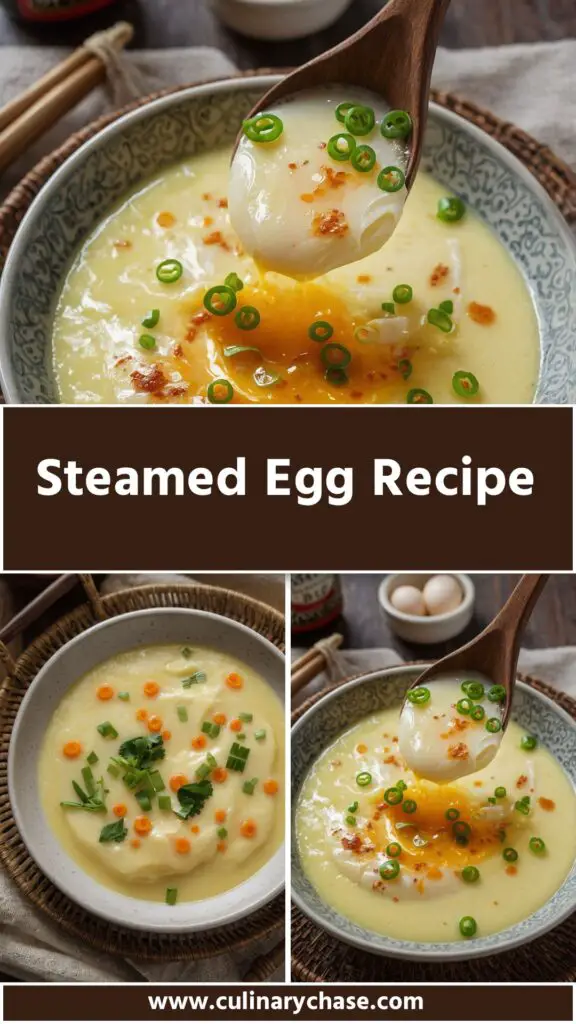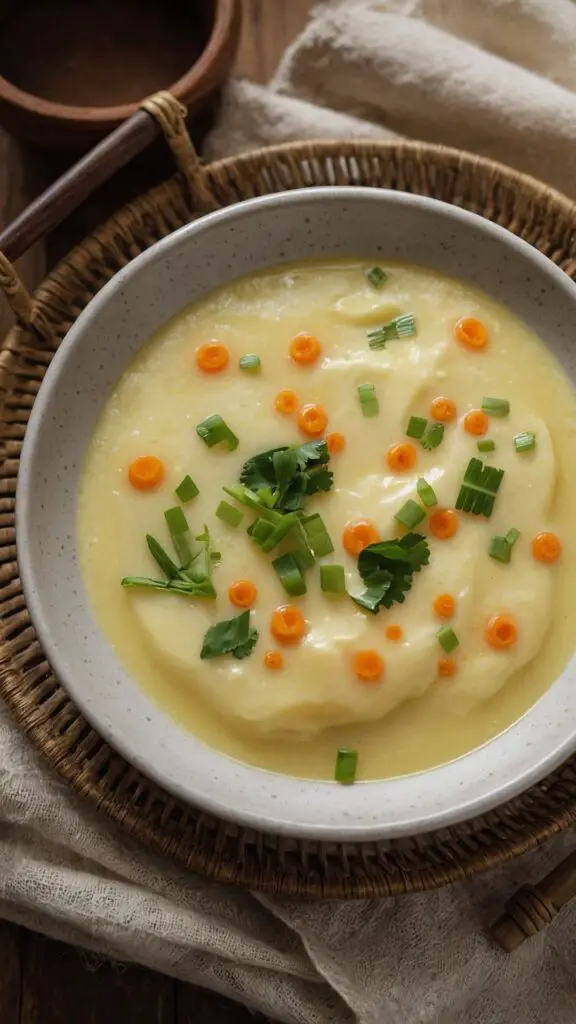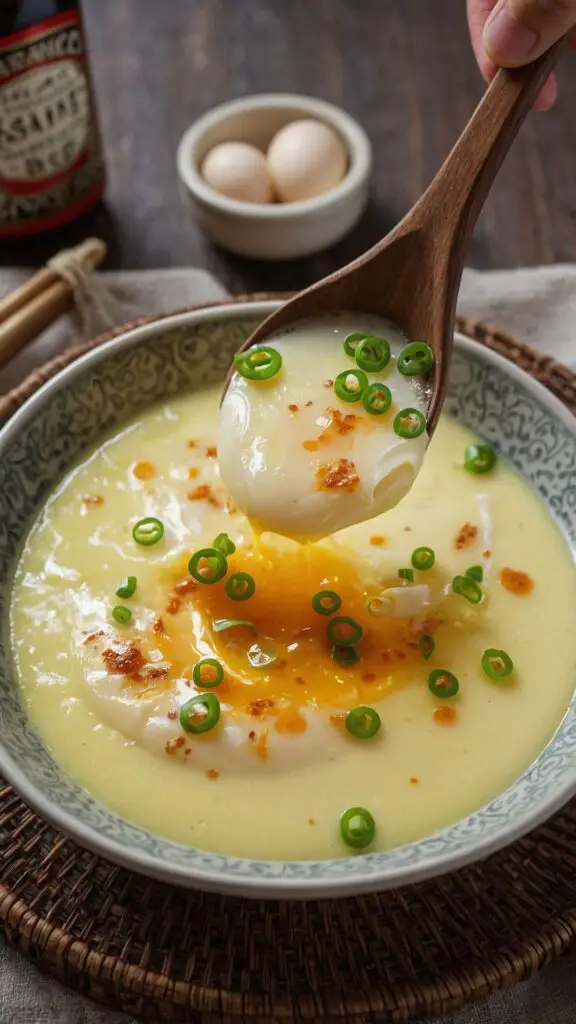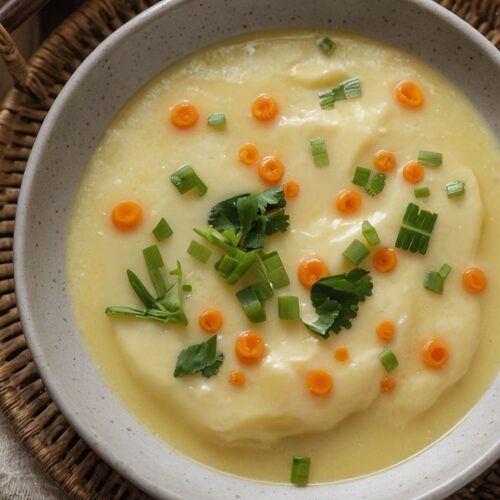Steamed Eggs Recipe – Culinary Chase
If you’re wondering what can accompany steamed eggs on your dining table, you’re in for a treat! Steamed eggs are versatile and pair wonderfully with various side dishes. Traditionally, they find a great match with rice for a satisfying meal. Adding sautéed vegetables or pickled radishes creates a delightful contrast in texture and flavor. A light salad drizzled with vinegar and olive oil can also provide a refreshing counterpart. And if you’re feeling adventurous, consider pairing steamed eggs with crispy toast drizzled with soy sauce for a unique twist. Now, let’s dive into the details of this delicious dish!

Steamed eggs may seem simple at first glance, but diving deeper reveals layers of flavor and technique. From my first taste, I knew there was something special about how the eggs were transformed by the steam. Trust me, this dish is not just for Chinese restaurants; it can be made with ease right at home! Whether you’re looking for a healthy breakfast, a light lunch, or an elegant side dish, steamed eggs deliver. Packed with protein and super easy to prepare, they may just become your new favorite.
What is a Steamed Egg?
Steamed egg, also known as “egg custard,” is a dish originating from East Asian cuisine. It consists of eggs beaten with water or broth and steamed until silky smooth. The result is a delicate, custard-like texture that melts in your mouth. The gentle cooking method preserves the egg’s flavor, resulting in a dish that’s comforting yet sophisticated.
Why Does This Recipe Work?
The magic of steamed eggs lies in its simplicity, but the key to success is the right technique. By using the correct water-to-egg ratio, you achieve that perfect custard-like consistency. The addition of broth instead of just water elevates the flavor from ordinary to extraordinary. This method also allows for creativity; you can add various ingredients to personalize your custard. The use of steam prevents the eggs from becoming rubbery, keeping them light and fluffy.
You will also like the following Lunch and Dinner recipes!
What You’ll Need to Make This Dish
Making steamed eggs requires just a handful of ingredients:
- 3 large eggs: Fundamental for the custard base.
- Water or broth: Equal volume to the eggs for that creamy texture.
- Salt: Adjust to your taste for seasoning.
- Green onions: Finely sliced for that fresh pop.
- Toasted sesame oil: For a hint of nuttiness.
- Low-sodium soy sauce: Adds umami depth.
- Ground white pepper: Gentle warmth without overpowering.

How to Make Steamed Egg
In the following sections, I’ll give you a step-by-step guide to preparing steamed eggs. It’s straightforward and perfect for anyone, whether you’re a seasoned cook or just getting started.
Step-by-Step Instructions
Step 1: Prepare the Mixture
Start by cracking the eggs into a mixing bowl. Add a pinch of salt to enhance the flavor. Next, measure an equal volume of water or broth based on the amount of eggs used. For instance, if you’re using three eggs, add approximately 3/4 cup of water or broth. Whisk the mixture gently. Avoid overbeating as that can create bubbles.
Step 2: Strain the Mixture
This step is crucial for achieving a smooth texture. Pour the egg mixture through a fine mesh strainer into another bowl or steam-proof container. This process removes any chalazae or bits of egg white, ensuring the final product is silky.
Step 3: Add Flavorings
After straining, stir in the finely sliced green onions, toasted sesame oil, low-sodium soy sauce, and ground white pepper. These additions will contribute to the savory flavor profile of steamed eggs.
Step 4: Prepare for Steaming
Next, cover the container with a lid or aluminum foil to prevent water from dripping into the mixture during steaming. This helps keep the top of your steamed eggs smooth.
Step 5: Steam the Eggs
Pour water into your steamer pot and bring it to a gentle boil. Once boiling, reduce the heat to maintain a steady simmer. Place the covered container in the steamer basket, sealing the lid tightly to keep the steam inside. Steam for about 15-20 minutes, checking occasionally to ensure the water level is ample.
Step 6: Check for Doneness
After about 15 minutes, check the eggs. They should be set but still jiggle slightly in the center. Remove them from the steamer and let them sit covered for a few minutes. The residual heat will continue cooking them slightly.
Tips for Perfect Steamed Eggs
- Water-to-egg ratio: Always maintain a 1:1 ratio of liquid to eggs for the best consistency.
- Straining: Don’t skip straining; it’s the secret to silky eggs.
- Steaming time: Adjust steaming time based on how many eggs you’re making.
- Temperature management: Keep the water simmering—not boiling furiously—to prevent the eggs from bubbling.
- Flavor additions: Get creative! Consider adding mushrooms, shrimp, or other vegetables for variety.
How to Store Leftovers?
If you have leftover steamed eggs, here’s how to store them properly. Allow them to cool completely, then cover with plastic wrap or transfer to an airtight container. They can last in the fridge for up to three days. Reheat gently in the microwave or re-steam, but be cautious not to overcook.
Nutrition Information
Steamed eggs are a powerhouse of nutrition. One serving delivers a significant amount of protein, essential vitamins, and healthy fats. The addition of green onions and sesame oil contributes beneficial nutrients, including antioxidants and healthy omega-3 fatty acids. This dish is low in carbohydrates, making it a fantastic option for those seeking a balanced diet.

How Would I Recommend Serving Steamed Egg?
Here are four tasty suggestions to serve alongside or enhance your steamed egg dish:
- Serve with Rice: Bowl of steamed jasmine or brown rice—The fluffy grains soak up the creamy egg custard beautifully, creating a balanced meal.
- Add Sautéed Vegetables: A medley of bell peppers and bok choy—Lightly sautéed veggies add crunch and color. The flavors combine nicely with the custard.
- Top with Pickled Vegetables: A side of pickled radish or cucumber—These tangy bites contrast the softness of the eggs and provide a delightful crunch.
- Create a Bowl: Mix with quinoa or soba noodles—For a heartier option, serve the steamed eggs over a bed of quinoa or with soba noodles, drizzled with a bit more soy sauce.
What Alternatives Can You Use for the Ingredients if Not Available?
Sometimes you might not have all the ingredients on hand. Here are some alternatives:
- Broth Options: Vegetable broth or chicken broth—If you don’t have low-sodium broth, use the regular variety or even water for a simpler taste.
- Egg Substitutes: Flax eggs or chia eggs—For a vegan alternative, consider mixing 1 tablespoon of flaxseed meal or chia seeds with 2.5 tablespoons of water for every egg.
- Green Onions: Chives—They work wonders if green onions aren’t in your pantry. Chives will impart a similar mild flavor.
- Sesame Oil: Olive oil—While the flavor is different, a splash of high-quality olive oil can give the dish richness if sesame oil isn’t available.

Steamed Eggs Recipe
Equipment
- Liquid measuring cup
- Whisk
Ingredients
- 3 large eggs
- Water or broth
- Salt
- Green onions
- Toasted sesame oil
- Low-sodium soy sauce
- Ground white pepper
Instructions
Step 1: Prepare the Mixture
- Start by cracking the eggs into a mixing bowl. Add a pinch of salt to enhance the flavor. Next, measure an equal volume of water or broth based on the amount of eggs used. For instance, if you’re using three eggs, add approximately 3/4 cup of water or broth. Whisk the mixture gently. Avoid overbeating as that can create bubbles.
Step 2: Strain the Mixture
- This step is crucial for achieving a smooth texture. Pour the egg mixture through a fine mesh strainer into another bowl or steam-proof container. This process removes any chalazae or bits of egg white, ensuring the final product is silky.
Step 3: Add Flavorings
- After straining, stir in the finely sliced green onions, toasted sesame oil, low-sodium soy sauce, and ground white pepper. These additions will contribute to the savory flavor profile of steamed eggs.
Step 4: Prepare for Steaming
- Next, cover the container with a lid or aluminum foil to prevent water from dripping into the mixture during steaming. This helps keep the top of your steamed eggs smooth.
Step 5: Steam the Eggs
- Pour water into your steamer pot and bring it to a gentle boil. Once boiling, reduce the heat to maintain a steady simmer. Place the covered container in the steamer basket, sealing the lid tightly to keep the steam inside. Steam for about 15-20 minutes, checking occasionally to ensure the water level is ample.
Step 6: Check for Doneness
- After about 15 minutes, check the eggs. They should be set but still jiggle slightly in the center. Remove them from the steamer and let them sit covered for a few minutes. The residual heat will continue cooking them slightly.
Notes
- Water-to-egg ratio: Always maintain a 1:1 ratio of liquid to eggs for the best consistency.
- Straining: Don’t skip straining; it’s the secret to silky eggs.
- Steaming time: Adjust steaming time based on how many eggs you’re making.
- Temperature management: Keep the water simmering—not boiling furiously—to prevent the eggs from bubbling.
- Flavor additions: Get creative! Consider adding mushrooms, shrimp, or other vegetables for variety.
Nutrition
Frequently Asked Questions
Can I make steamed eggs in the microwave?
Yes, you can! In a microwave-safe bowl, combine the eggs and broth, cover, and microwave for about 1-3 minutes, checking often to avoid overcooking.
Is steamed egg a breakfast dish?
Absolutely! While popular for breakfast, steamed eggs can also serve as a light lunch or side dish for dinner.
How do I fix rubbery steamed eggs?
If your steamed eggs turn out rubbery, it’s likely due to overcooking. Ensure you stick to recommended cooking times and use the right water-to-egg ratio.
How do I fix rubbery steamed eggs?
If your steamed eggs turn out rubbery, it’s likely due to overcooking. Ensure you stick to recommended cooking times and use the right water-to-egg ratio.
Can I add meat to steamed eggs?
Yes! You can incorporate cooked meats like shrimp or diced chicken into the egg mixture before steaming for an added protein boost.
What’s the best way to ensure the eggs are fluffy?
Incorporating air gently when whisking and ensuring the mixture is strained will prevent bubbles and contribute to a fluffier texture.
Conclusion
Steamed eggs are not just a dish; they are an experience that brings comfort and warmth to the table. Their simplicity allows for creativity and experimentation, making them perfect for anyone. Whether you choose to enjoy them plain or jazz them up with toppings and sides, you’ll find that they are ridiculously versatile. Plus, with the right techniques and ingredients, you’ll be crafting the perfect custard-like egg dish in no time. Give them a try, and elevate your culinary repertoire!
